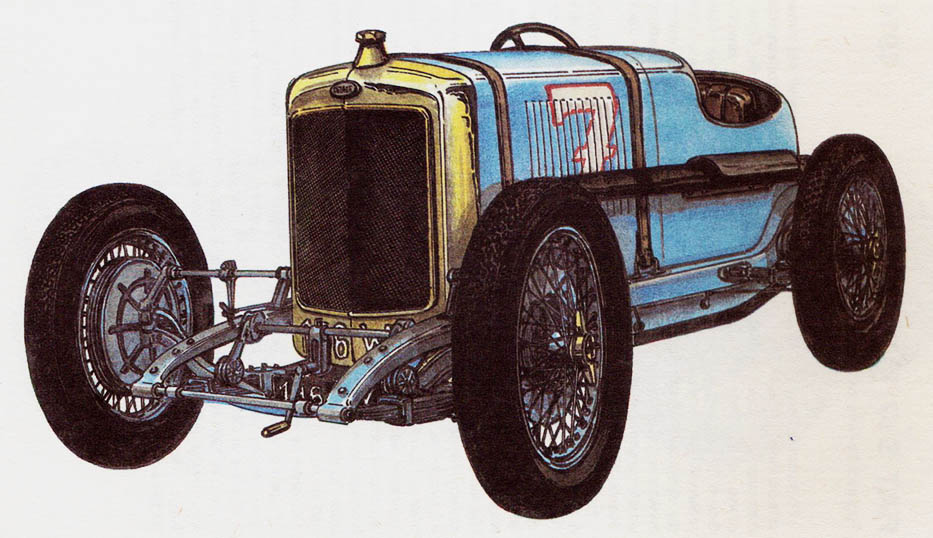DELAGE – year 1914
Delage Cars, Courbevoie, His, France.
For many years, Delage cars appeared on Grand Prix racing tracks, which, along with Peugeot vehicles, are among the most serious favorites. Unfortunately, there was always something that prevented them from winning. However, success was achieved in others, no less famous races, np. French Grand Prix 1913 in Le Mans (Bablot) or Indianapolis 1914 (Thomas).

Delage Cars, Courbevoie, His, France.
Before the ACF Grand Prix races in 1914 of the year, Louis Delage assessed the participants' chances as follows: „48 % for me, 48 % for Peugeot, others 4 % at the disposal of the others, including Mercedes”. How these competitions ended, we learned from the previous description. Despite these inaccurate predictions, it would be unfair not to mention Delage, whose designs raised the technical level of racing cars. Due to the new competition regulations, Delage had to 1914 r. to abandon its large-capacity OHV engine (6,25 I) and build a smaller engine. Regular four-cylinder engine with two camshafts in the cylinder head (2 x OHC) had now, at the cylinder diameter 94 mm and the stroke length 160 mm, total capacity 4430 cm3. However, the turnover increased significantly, which at maximum power 80,9 kW (110 KM) achieved 3000 RPM. A novelty was the use of a five-speed gearbox, thanks to which the maximum power was used better than before in a narrow range of revolutions. Delage also did not lag behind in the new solution of brakes acting on all wheels, which made it equal with Peugeot companies, Fiat i Piccard-Pictet, which applied them in the year 1914 for the first time in a Grand Prix race. Perrot-type caliper brakes on the front wheels were dimensioned on a grand scale and drew attention to the large diameter of the ribbed drums for better heat dissipation. The vehicle had a longitudinal frame with rigid axles suspended on semi-elliptical springs. It reached the maximum speed 165 km/h, and Duray drove at an average speed during the ACF Grand Prix 95,5 km/h. After the Grand Prix races in 1914 year began the First World War, which made it impossible to organize car races in Europe for several years, and the development of automotive companies went in a different direction. Grand Prix races in the years 1915 i 1916 were transferred to the USA, where Peugeot cars were successful, Delage i Mercedes. After the United States joined the world war in 1917 Grand Prix competition was not organized in the world.